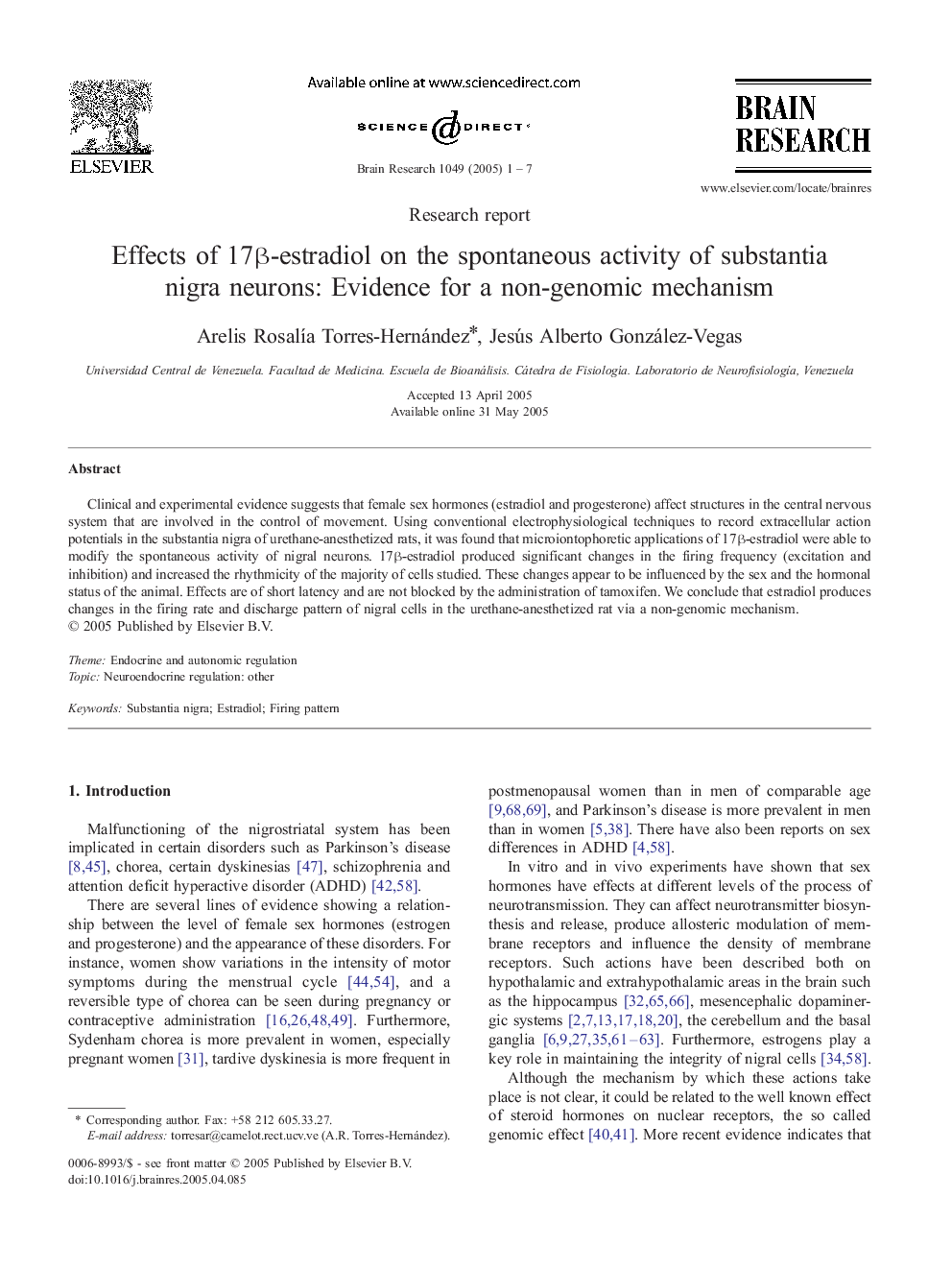| Article ID | Journal | Published Year | Pages | File Type |
|---|---|---|---|---|
| 9416254 | Brain Research | 2005 | 7 Pages |
Abstract
Clinical and experimental evidence suggests that female sex hormones (estradiol and progesterone) affect structures in the central nervous system that are involved in the control of movement. Using conventional electrophysiological techniques to record extracellular action potentials in the substantia nigra of urethane-anesthetized rats, it was found that microiontophoretic applications of 17β-estradiol were able to modify the spontaneous activity of nigral neurons. 17β-estradiol produced significant changes in the firing frequency (excitation and inhibition) and increased the rhythmicity of the majority of cells studied. These changes appear to be influenced by the sex and the hormonal status of the animal. Effects are of short latency and are not blocked by the administration of tamoxifen. We conclude that estradiol produces changes in the firing rate and discharge pattern of nigral cells in the urethane-anesthetized rat via a non-genomic mechanism.
Keywords
Related Topics
Life Sciences
Neuroscience
Neuroscience (General)
Authors
Arelis RosalÃa Torres-Hernández, Jesús Alberto González-Vegas,
